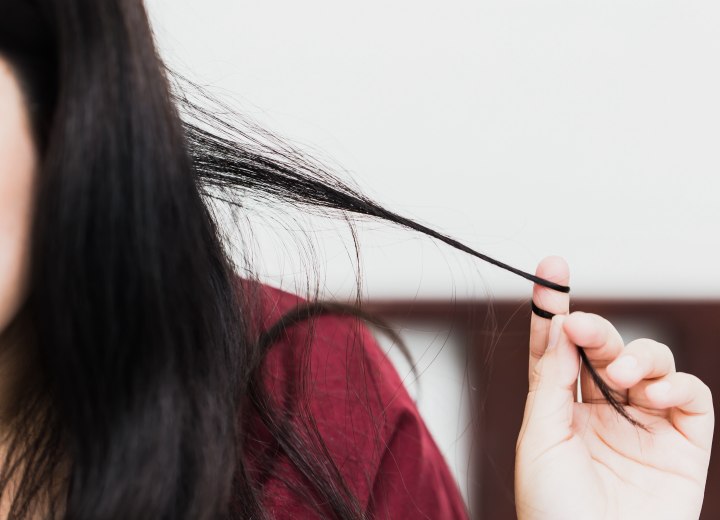Table Of Content

And I am grateful to have found a way to manage it momentarily. And despite never really being dedicated or well practice in the upkeep and styling of my hair, there are days when I see and old picture of myself and sorely miss having hair. I used it to peer into our full length mirror in the hallway. ” And even veiled, empty threats such as “Do we need to shave your head!?
Connect, Learn, and Grow
It can range from mild hair/eyelash pulling to baldness, disfigurement, and chronic skin conditions. It may start at 22 months age, earlier than all other disorders, but there are no recorded onsets over 60 years of age, unlike most disorders. It may also start at preteen stages due to hormonal changes that occur.
Management and Treatment
They may also pull out their eyelashes, eyebrows, facial hair (like beards or mustaches), or armpit, leg, or pubic hair. Often, they pull when they're stressed or bored as a way to soothe themselves. Seeking help is the first step in treating trichotillomania.
How to take care of myself/manage symptoms?
The realization that they are pulling out hair can lead to more feelings of anxiety and embarrassment. This creates a cycle of anxiety, hair pulling, temporary relief then anxiety, embarrassment, and hair pulling again. So far, studies have shown that people with trichotillomania are more likely to also have ADHD. In one study that looked at people with trichotillomania, almost 1 in 6 also had ADHD. People who have ADHD and trichotillomania might have more issues with controlling their impulses than people who only have one condition. Scientists think some people with ADHD might pull to help themselves focus.
You may have the urge to pull based on how your hair or scalp feels. Trichotillomania (TTM) is a mental disorder in which people feel an overwhelming need to pull out their own hair. Research suggests that 0.5 to 2 percent of people have TTM. Some people feel itchiness or tingling in their eyebrows and pull in response.
Trichotillomania FAQs
Affected people may feel embarrassed by or ashamed of the way they look or of their inability to control their behavior. They may try to camouflage the hair loss by wearing wigs or scarves. Some pull out hair from widely scattered areas to disguise the loss.
Trichotillomania, Isolation and Anxiety: What to Do? - The New York Times
Trichotillomania, Isolation and Anxiety: What to Do?.
Posted: Mon, 25 May 2020 07:00:00 GMT [source]
A wide range of emotions, spanning from boredom to anxiety, frustration, and depression can affect hair pulling, as can thoughts, beliefs, and values. Some people don’t seek treatment because they believe medical or mental health professionals don’t know much about the disorder. Trichotillomania (TTM) is sometimes related to certain mental health conditions, such as anxiety and depression. While it may also start for other reasons, it is often cyclical. Some people with trichotillomania also pull out the hair from their eyebrows. This goes beyond usual grooming, and people have trouble resisting the urge to pull their eyebrows.

Causes of Trichotillomania
For this reason, scientists think ADHD and trichotillomania might have some connection with each other, but scientists are still learning about these links. Trichotillomania is also linked to anxiety, but scientists don't fully understand the relationship. For example, some people with trichotillomania might feel anxious or depressed because they are embarrassed about pulling. Other people might start pulling as a way to deal with stress or anxiety. We do know that about 3 out of 5 people with trichotillomania also have anxiety.
After pulling the hair, they may have a moment of relief or satisfaction. There can be many reasons someone would begin pulling their hair. Boredom, tension, anxiety, or stress can fuel it, and performing the act can cause a sense of relief, pleasure or gratification. Trichotillomania, also known as “TTM” or “trich,” is a mental health disorder characterized by obsessive-compulsive behavior. Sometimes doctors prescribe medications to help control symptoms.
People who are prone to stress or have high levels of stress in their lives are at a higher risk of developing trichotillomania. If you have TTM, it’s important to see a healthcare provider (or multiple providers) with specialized training and experience in treating this condition. They can best guide you on what you can do to minimize the impact of this condition on your life.
The onset of trichotillomania often coincides with the onset of puberty, and symptoms typically first appear between the ages of 10 to 13. However, symptoms may also manifest in infants, younger children, older teens, or adults. If not treated, symptoms may come and go for weeks, months or years at a time. For example, hormone changes during the menstrual period can worsen symptoms in some females.
No comments:
Post a Comment